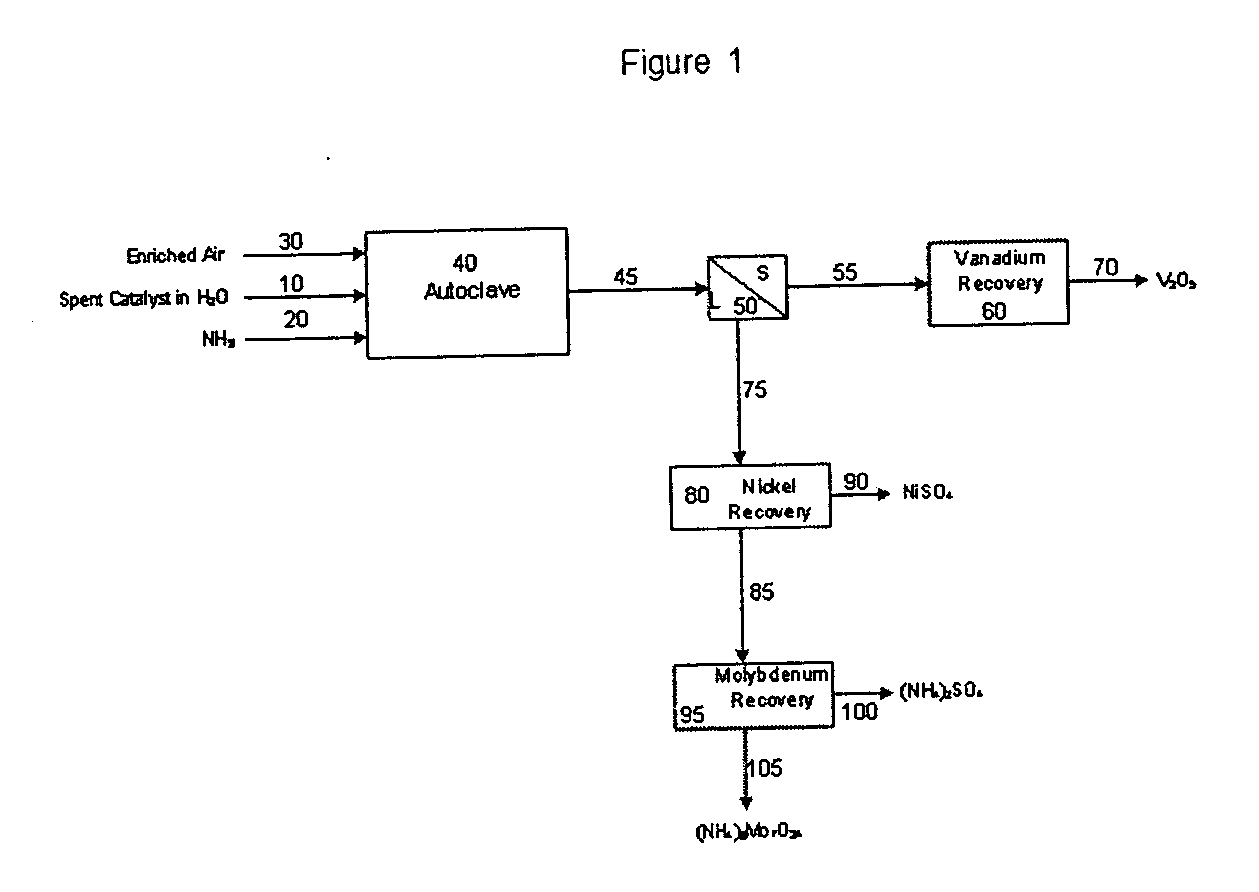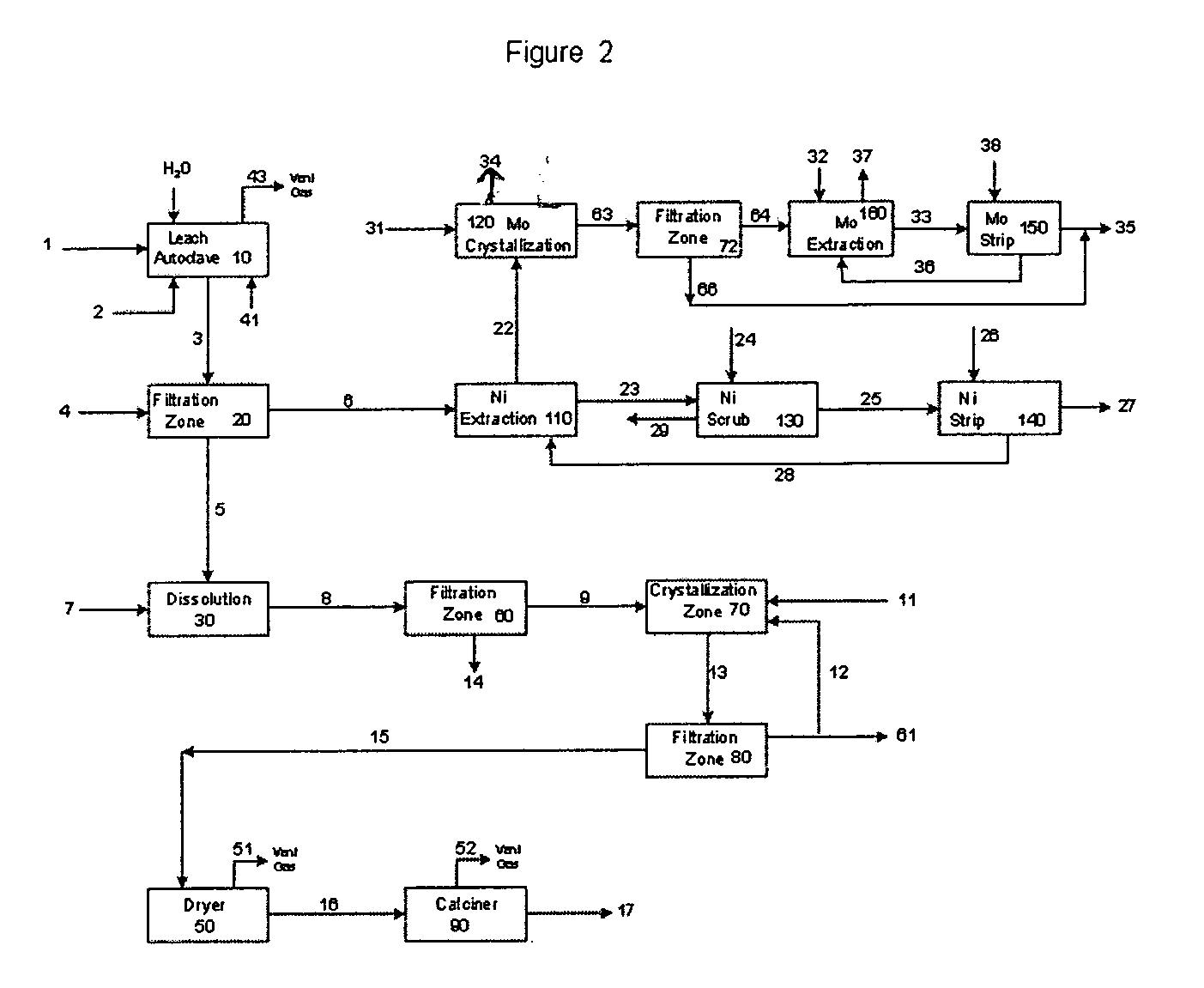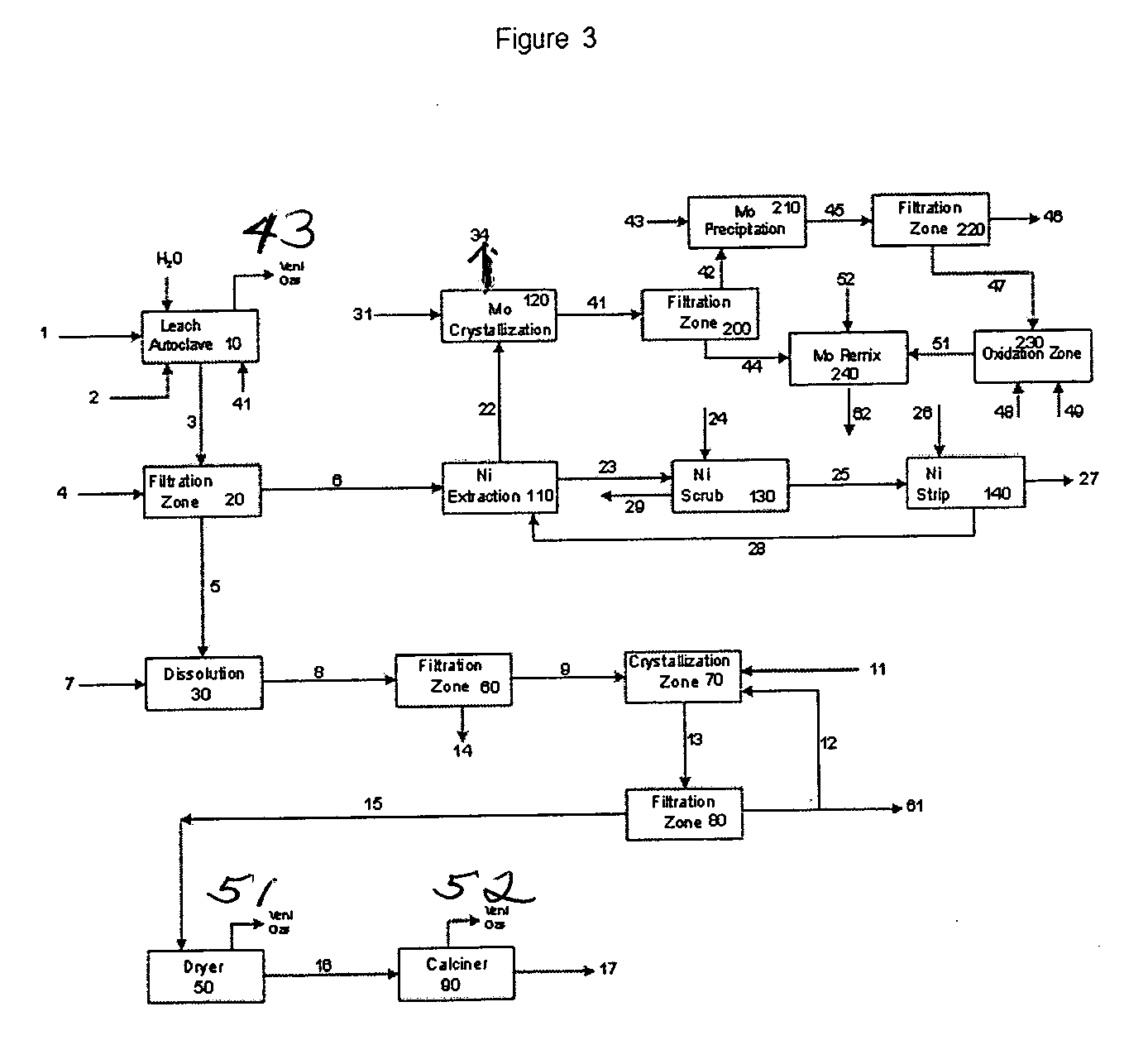Process for metals recovery from spent catalyst
a metal recovery and catalyst technology, applied in the field of metal recovery, can solve the problems of increasing the cost of both supported and unsupported catalysts, increasing the need for fresh makeup catalysts, and more expensive materials,
- Summary
- Abstract
- Description
- Claims
- Application Information
AI Technical Summary
Problems solved by technology
Method used
Image
Examples
Embodiment Construction
[0027] A novel process has been envisioned that will enable the recovery of metals, specifically molybdenum, nickel, and deposited vanadium, from unsupported spent hydroprocessing catalysts. The claimed process comprises the steps of autoclave-based ammoniacal metals leach, vanadium metal recovery, nickel metal solvent extraction, and molybdenum metal solvent extraction. FIG. 1 provides a broad overview of the process. FIGS. 2 and 3, discussed below, are more specific.
[0028]FIG. 1, a brief overview of the process of the instant invention, shows spent catalyst, MOS2 slurried in water (line 10), entering the autoclave 40, along with ammonia (line 20) and enriched air containing additional oxygen (line 30). Leaching reactions occur in the autoclave 40, producing ammonium molybdate and nickel ammonium sulfate, which remain in solution and pass, through line 45, to the leach residue filter press 50. The ammonium metavanadate precipitates out as a solid in the leach slurry. Solid / liquid ...
PUM
| Property | Measurement | Unit |
|---|---|---|
| Temperature | aaaaa | aaaaa |
| Temperature | aaaaa | aaaaa |
| Pressure | aaaaa | aaaaa |
Abstract
Description
Claims
Application Information
 Login to View More
Login to View More - R&D
- Intellectual Property
- Life Sciences
- Materials
- Tech Scout
- Unparalleled Data Quality
- Higher Quality Content
- 60% Fewer Hallucinations
Browse by: Latest US Patents, China's latest patents, Technical Efficacy Thesaurus, Application Domain, Technology Topic, Popular Technical Reports.
© 2025 PatSnap. All rights reserved.Legal|Privacy policy|Modern Slavery Act Transparency Statement|Sitemap|About US| Contact US: help@patsnap.com



